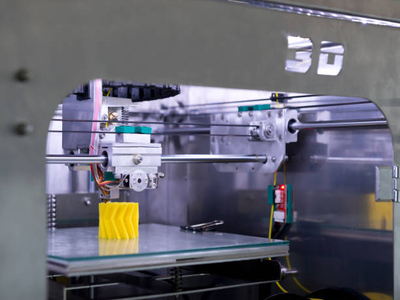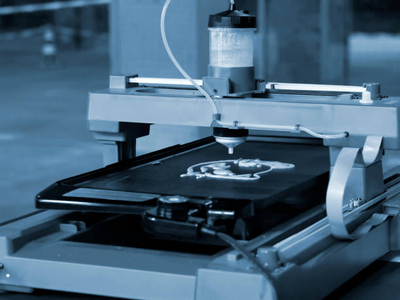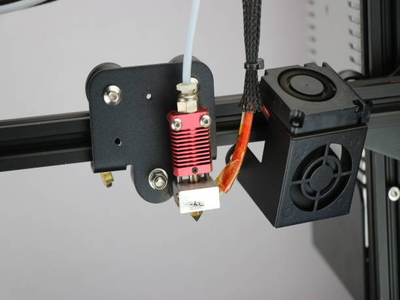Although 3D-printed components have numerous advantages, they are not always waterproof.
3D-printed parts are made from porous materials that absorb water easily.
This can cause the part to swell and distort, and in some cases, the part may even disintegrate.
In this post, we are going to discuss how to waterproof 3D prints so they do not get ruined.
Choosing the Right Materials

PLA, ABS, and PETG are the three main materials used in FDM printing.
PLA is made from renewable resources like corn starch and is one of the most common materials used in home 3D printing. Check out our PLA filament reviews here.
ABS is also a strong material but is more often used for making industrial parts. You can read all about the best ABS filament here.
PETG is a durable material that is resistant to chemicals and heat and is used in a wide variety of applications from hobbyist prints to commercial food-grade packages.
Each material has its own advantages and disadvantages, so you will need to choose the right material for your project.
For example, PLA may be easier to print with than ABS, but ABS is stronger.
Likewise, PETG is as strong as ABS is, but PETG is easier to print with than ABS.
Read our related article where we review the Best PETG Filament for your 3D prints!
Food Safety
If you plan on using a 3D-printed part for any application that will come in contact with food or drink, it is crucial to use a material that is safe for these applications.
This means using a food-safe material such as PP or PETG, rather than ABS or ASA, which are not approved for use with food or drink.
ABS and ASA materials are typically more durable and harder than other materials, making them ideal for parts that need to withstand high temperatures or harsh conditions.
However, they may contain traces of chemicals that can leach into your food or drinks and pose a health risk.
So, if you want to ensure the safety of your products, always opt for a food-safe material when printing 3D parts for use with food or drink.
Heat Resistance

Many people think that heat resistance and waterproofing are the same things, but they are actually quite different.
Heat resistance is a measure of how well a material can withstand high temperatures.
Waterproofing, on the other hand, is a measure of how well a material can repel water.
If a part is going to be exposed to high temperatures, heat resistance will be important.
On the other hand, if a part is going to be used in an environment where it will be exposed to water, waterproofing will be important.
In some cases, both properties may be important.
Regardless, it is important to understand the difference between heat resistance and waterproofing before selecting a material for an application.
Slicer Settings
When a three-dimensional model is created, it must first be “sliced” into thin layers which can then be printed one at a time.
Slicing in 3D printing is typically done using free 3D printing software and a variety of different settings that can be used to control the thickness of the slices and the level of detail.
The choice of slicing settings can have a significant impact on the quality of the final print and the level of waterproofing.
In general, thicker slices are easier to print but result in a lower-quality finished product, while thinner slices take longer to print but produce a more detailed and accurate print.
But, it is in those thinner, more complicated prints where it is harder for your print to be waterproofed.
If you need a level of waterproofing, simplify your design.
Ultimately, the best slicing settings for a given 3D model will depend on the desired outcome and the capabilities of the 3D printer.
Extrusion
If you’re looking to create functional parts that are impervious to water and other liquids, then you may want to consider deliberately over-extruding your prints.
This technique involves applying more material than normal during printing, which helps to fill in 3D printed gaps or defects that could potentially allow water or other liquids through.
This method does require a certain level of finesse and careful control over the printing parameters.
But, the end result is a print that is significantly more waterproof than one printed without excess extrusion.
If you need your parts to be solid and stable even when exposed to high levels of moisture, then it may be worth investigating this approach.
Ultimately, the success of your project will depend on finding the right balance between over-extrusion and keeping print times as short as possible.
With a bit of experimentation and trial and error, you should be able to achieve impressive results.
Read More: Extruder 3D Printer Definition. Learn all you need to know about extruders and extrusion here!
Nozzle Size

When it comes to making parts more waterproof, another key factor is the 3D printer nozzle size used.
A wider nozzle exposes more area to the surface of the part being created, helping ensure that all areas of the part get an even coating of waterproofing material.
When using a wider nozzle, there is actually less risk of applying too much or too little waterproofing material, since the width of the stream will always be consistent.
Therefore, if you are looking for better water resistance for your 3D-printed projects, consider switching to a different nozzle width to ensure optimal results.
Whether you are looking for indoor or outdoor parts, a wider nozzle can help make your work more waterproof and last longer.
Layer Height
Yet another factor that can have a significant effect on overall water resistance is the layer height setting.
A higher layer height setting creates taller layers that can help make certain areas of your print more watertight.
The increased vertical distance between individual layers gives water less room to penetrate the surface of the print.
Additionally, taller layers offer extra support, helping to prevent cracks and other structural weaknesses that are prone to letting water through.
Therefore, when seeking to improve waterproofing in your prints, explore different layer height settings and experiment with different combinations of height and infill patterns.
With some trial and error, you should be able to find an ideal setup that yields strong, waterproof prints every time.
Watch this video on printing watertight 3D prints:
Articles You Might Want to Read